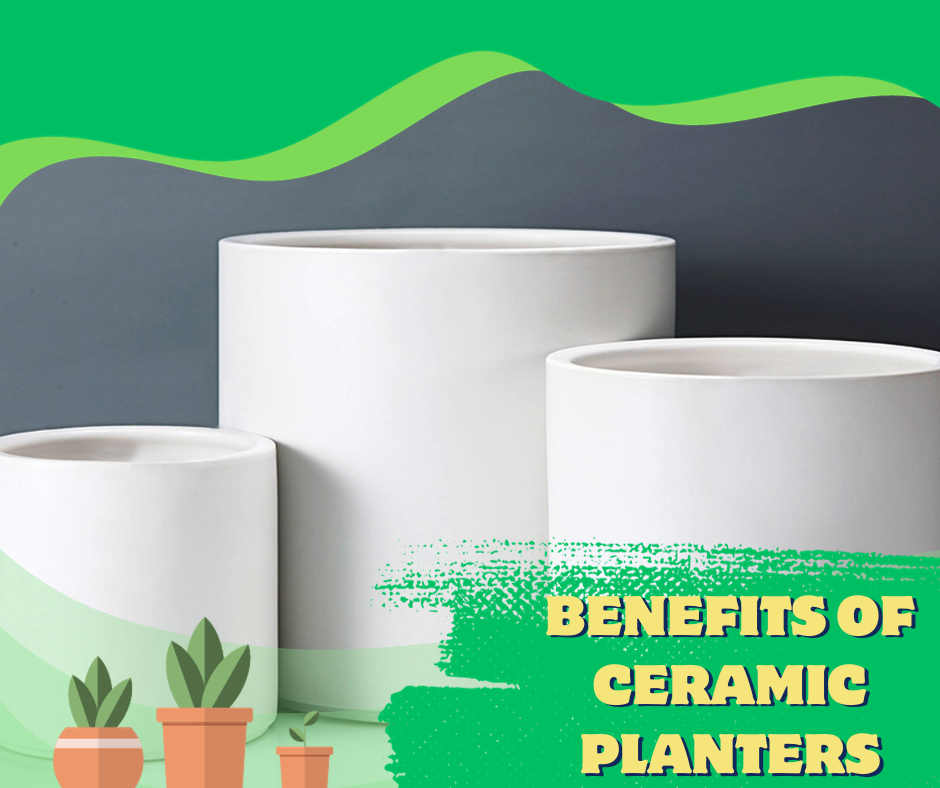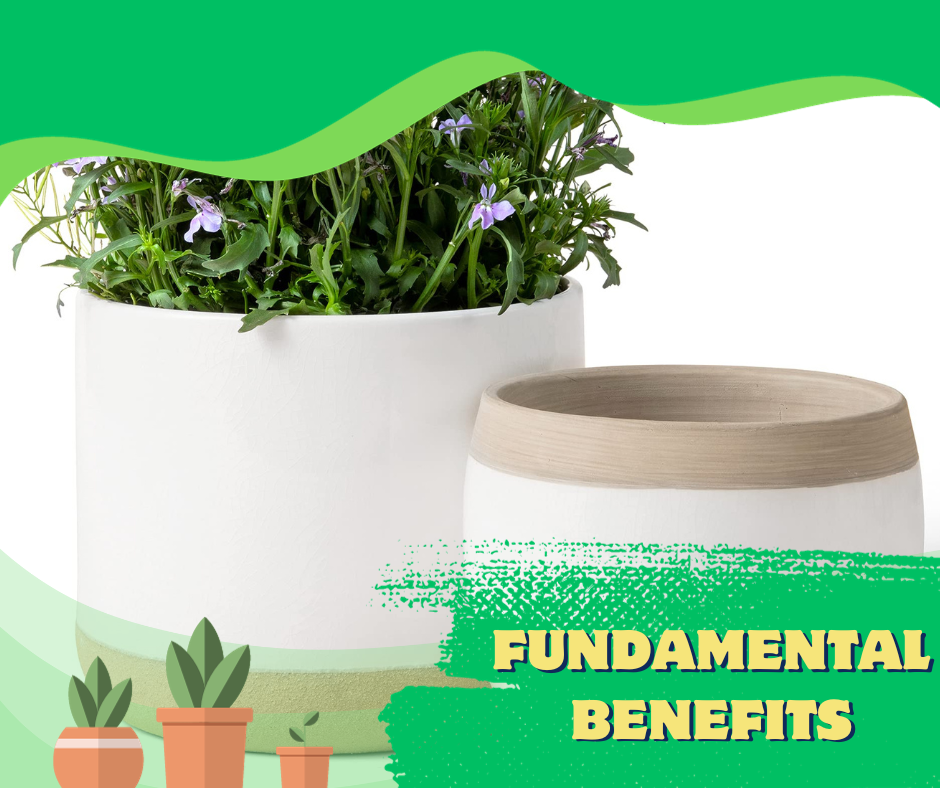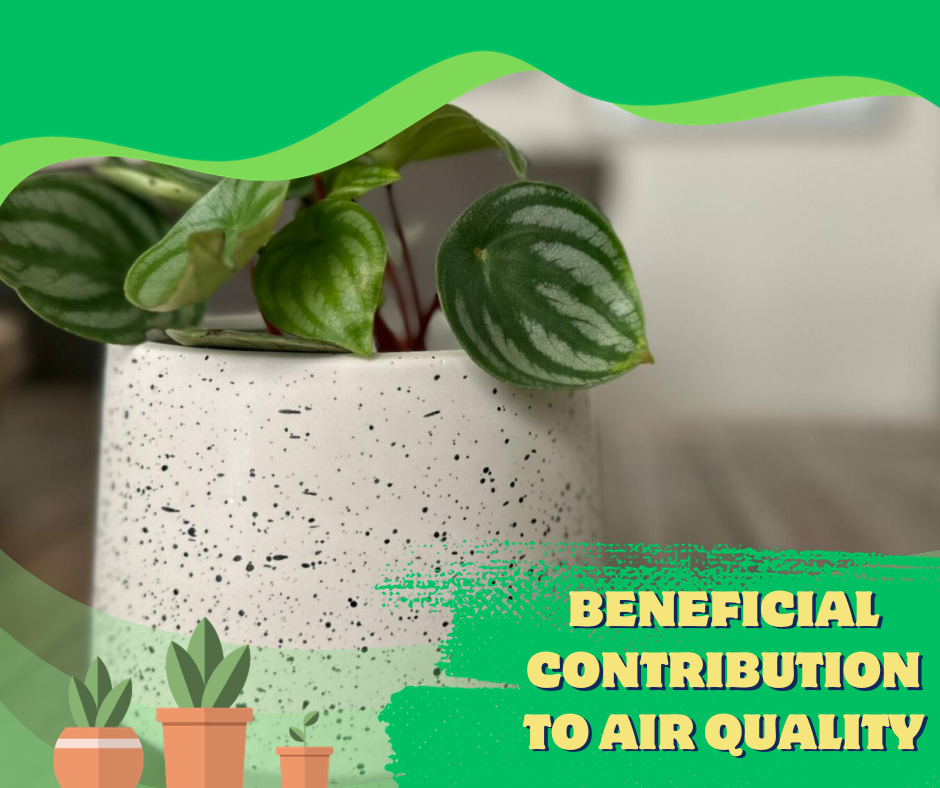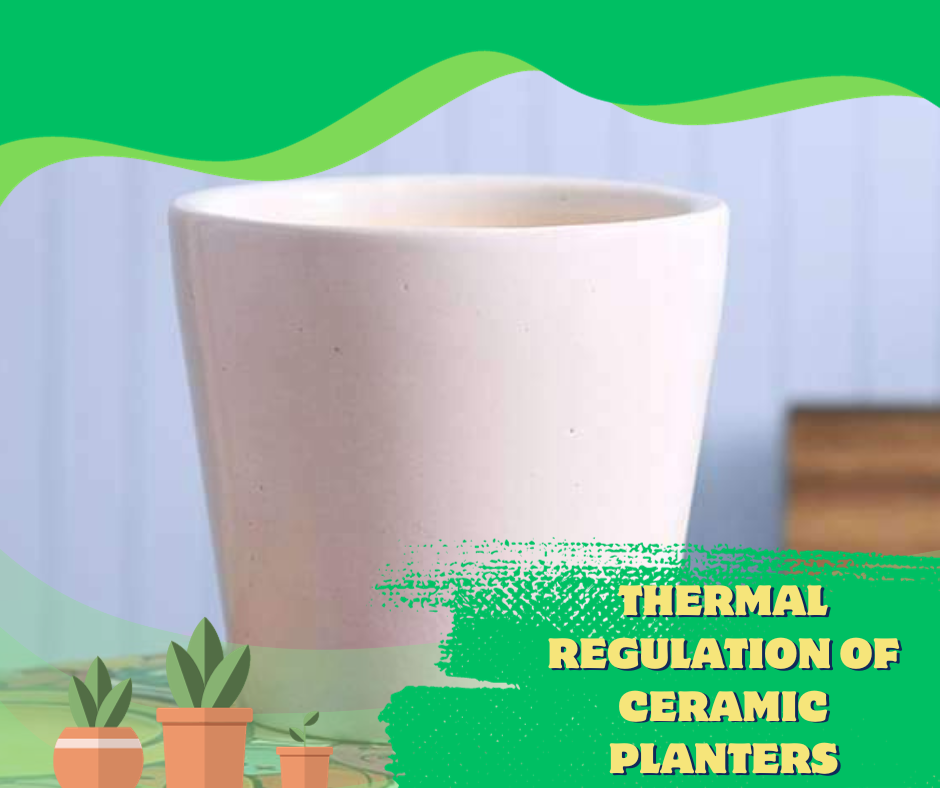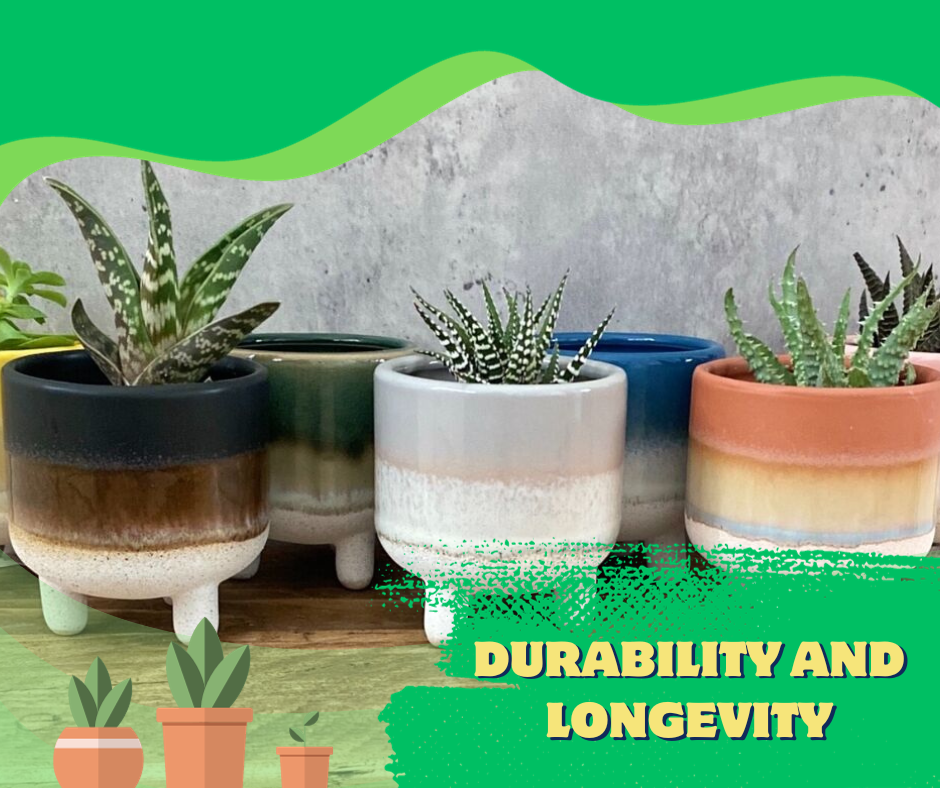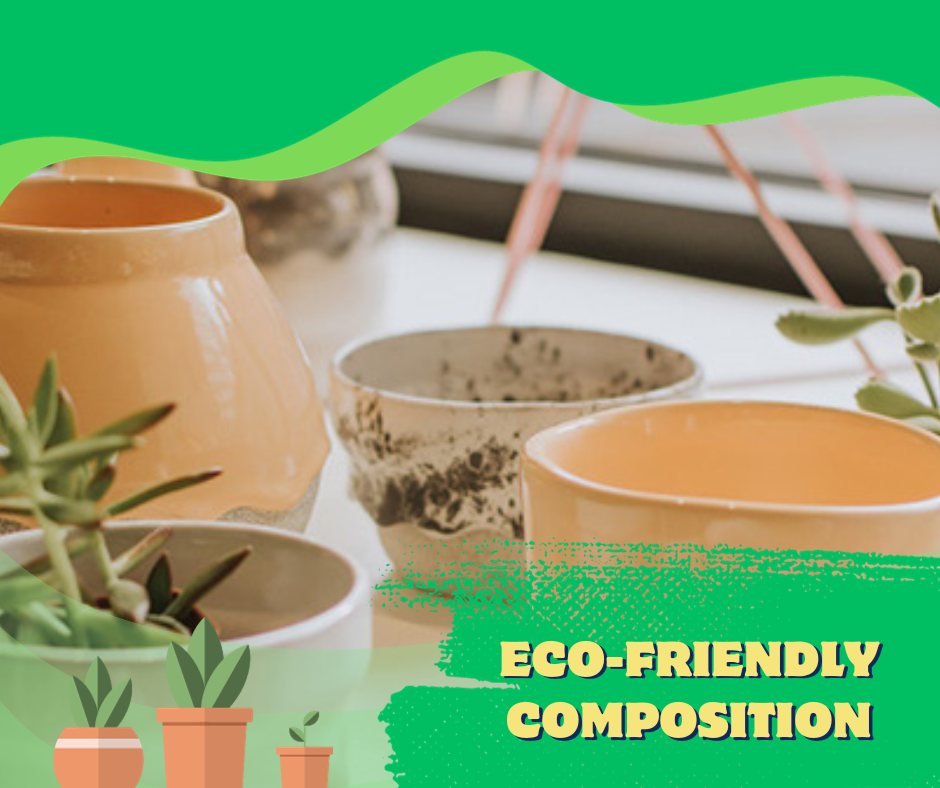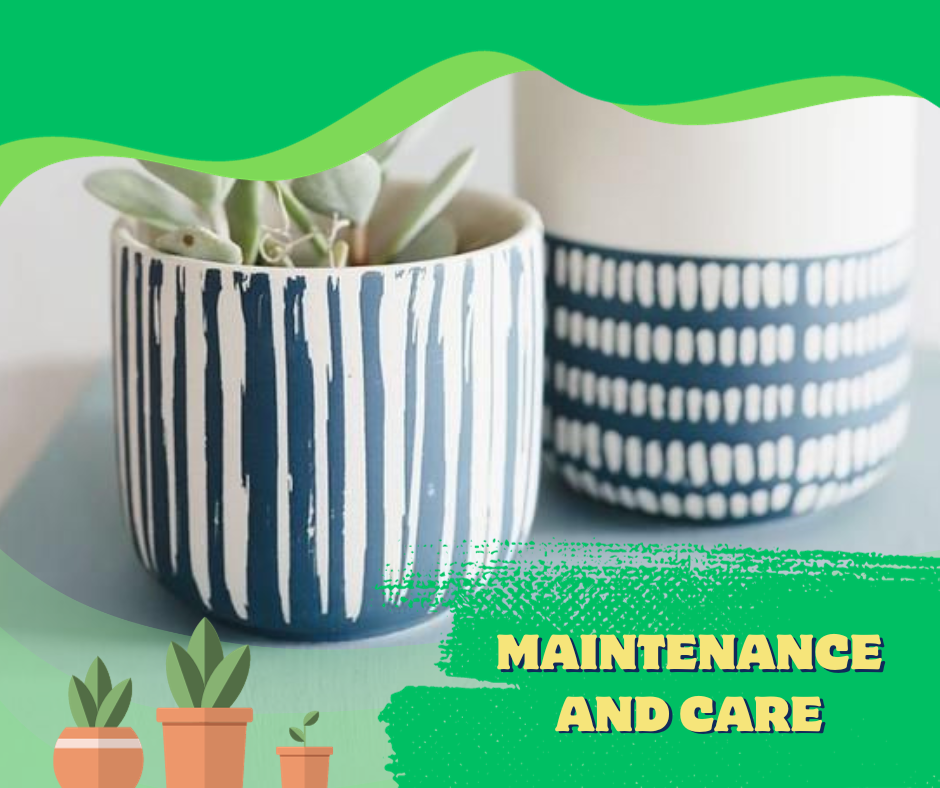HousePlantJoy is supported by our audience. When you purchase through one of our links, we may earn a small affiliate commission. As an Amazon Associate I earn from qualifying purchases. Your cost is not affected.
==================
Enhancing Your Indoor and Outdoor Plant Display
Ceramic planters have long been popular for indoor and outdoor gardening enthusiasts. These containers offer a unique combination of durability, design flexibility, and functional benefits, making them an ideal choice for various types of plants. Whether you’re an experienced gardener or just starting to explore the world of plant caretaking, ceramic pots provide a range of advantages that can improve your green spaces’ overall health and appearance.
One of the most notable benefits of ceramic planters is their porous nature, which allows for improved airflow and water absorption. This is particularly important for plants that thrive in well-draining environments, as it helps regulate moisture levels and ensures healthy root development. Additionally, ceramic pots are known for their excellent thermal regulation, making them suitable for different climates and protecting plant roots from extreme temperature fluctuations.
Key Takeaways
- Ceramic planters offer durability, design flexibility, and functional benefits for various types of plants.
- The porous nature of ceramics allows for improved airflow and water absorption, promoting healthy root growth.
- Thermal regulation provided by ceramic pots makes them suitable for different climates and protects plant roots from extreme temperatures.
Credits: Geeks of Green
The Fundamental Benefits
of Ceramic Planters
As an avid gardener, I’ve experienced the advantages of using ceramic planters for indoor and outdoor plants. Several critical benefits set ceramic planters apart from other options on the market.
First and foremost, the porous nature of ceramic planters offers exceptional insulation, which protects my plants from sudden temperature fluctuations. This characteristic creates a healthier and more stable environment for the plants to thrive in, ensuring they remain at their optimal health. In addition, the porous material promotes good airflow and water absorption sources.
Ceramic planters also come with excellent drainage capabilities. Potted plants must expel excess water, as they cannot rely on the ground’s infinite depth. With good drainage, ceramic planters mimic the plant’s natural environment effectively, preventing potential root rot and other moisture-related issues.
To Add
I have found that ceramic pots offer versatility in design and aesthetics. A wide range of colors, shapes, and sizes is available, allowing me to pick the perfect planter for every room in my house. The contrasting and blending colors of ceramic pots complement the beauty of the plants, adding a touch of elegance and visual appeal to their surroundings source.
Lastly, I need to pay attention to the durability of ceramic pots. Though they may be heavier than their plastic counterparts, the extra weight offers stability, ensuring that my plants won’t tip over during strong winds or when accidentally bumped. Furthermore, the substantial build quality means these planters are built to last long, providing a reliable and secure home for my green friends.
In summary, ceramic planters offer numerous insulation, drainage, aesthetics, and durability benefits, making them an ideal choice for housing both indoor and outdoor plants. As someone who has personally experienced these advantages, I wholeheartedly recommend ceramic planters to anyone looking to enhance the health and beauty of their plant collection.
We invite you to explore a selection of our exquisite ceramic planters, thoughtfully curated to enhance your home’s aesthetic. These captivating discoveries are sure to elevate your indoor greenery. #ads #commissionsearned
Beneficial Contribution to Air Quality
Natural Humidity Control
As a plant lover, I have discovered that ceramic planters provide a unique advantage when controlling humidity levels. Thanks to their porous nature, they can absorb and release excess moisture from the soil, maintaining an ideal plant moisture level. This keeps the soil at a stable humidity crucial for healthier plants. In this way, ceramic planters act as a natural humidity control system, ensuring that our indoor plants never experience waterlogging or dehydration.
Air Purification Capabilities
Another impressive benefit that ceramic planters offer is their ability to contribute to the air purification process. I’ve learned that indoor plants play a vital role in improving air quality by removing toxins and purifying the air. Due to the enhanced airflow facilitated by these planters, plants in ceramic pots can absorb more harmful pollutants from the air. Moreover, ceramic pots also allow more oxygen to penetrate the soil, promoting healthier root growth, and ultimately leading to more efficient air purification.
In conclusion, by using ceramic planters, I am not only maintaining the ideal humidity levels for my plants but also harnessing their air purification capabilities to improve indoor air quality. So, ceramic planters are perfect for creating a greener and healthier living environment.
Thermal Regulation of Ceramic Planters
As a gardener, I appreciate the significant role that temperature regulation plays in my plants’ overall health and growth. Ceramic planters are known for maintaining a stable temperature around the plant’s root system. I’d like to explain how ceramic planters achieve this through heat retention and cold resistance.
Heat Retention
Ceramic planters are great at retaining heat due to their material composition. The heat absorbed during the day is redistributed evenly, making it perfect for plants that prefer warmth. This allows me to ensure my plants get the warmth they need throughout the day, even after the sun sets. Furthermore, I’ve noticed that this heat retention helps with moisture regulation, as these planters can hold moisture longer than other materials, such as plastic or metal pots. For my convenience, this means I don’t have to water my plants as often.
Cold Resistance
Interestingly, ceramic planters also excel in cold resistance, providing some insulation against freezing temperatures. This is particularly useful for sensitive plants in colder climates or during winter. The material’s natural properties create a buffer between the atmosphere and the plant’s root system, protecting the roots from frost damage. When I know a cold night is approaching, I feel comfortable knowing that my plants in ceramic planters have some degree of protection from the cold.
Overall, using ceramic planters for my plants has been wise as they provide excellent thermal regulation, creating an ideal growing environment. It helps me maintain my plants in good health, irrespective of climatic changes.
Durability and Longevity
As a garden enthusiast, I’ve found that one of the main benefits of using ceramic planters is their durability and ability to withstand the test of time. In this section, I will explore their hard-wearing nature and resistance to rot and rust.
Heat Retention
Ceramic planters are excellent at retaining heat due to their material composition. The heat absorbed during the day is redistributed evenly, making it perfect for plants that prefer warmth. This allows me to ensure my plants get the warmth they need throughout the day, even after the sun sets. Furthermore, I’ve noticed that this heat retention helps with moisture regulation, as these planters can hold moisture longer than other materials, such as plastic or metal pots. For my convenience, this means I can water my plants less often.
Cold Resistance
Interestingly, ceramic planters also excel in cold resistance, providing some insulation against freezing temperatures. This is particularly useful for sensitive plants in colder climates or during winter. The material’s natural properties create a buffer between the atmosphere and the plant’s root system, protecting the roots from frost damage. When I know a cold night is approaching, I feel comfortable knowing that my plants in ceramic planters have some degree of protection from the cold.
Overall, using ceramic planters for my plants has been a wise decision as they provide excellent thermal regulation, creating an ideal growing environment. It helps me maintain my plants in good health, irrespective of climatic changes.
Bottomline
In conclusion, ceramic planters offer a combination of durability, longevity, and resistance to rot and rust, making them an excellent choice for any gardener seeking a reliable and long-lasting option for their plants.
Design and Decorative Advantage
Aesthetic Versatility
One of the significant benefits of ceramic planters is their aesthetic versatility. Ceramic planters come in various styles, shapes, and colors, allowing me to find the perfect fit for my home or garden easily. From modern, sleek designs to intricately detailed and painted planters, there’s always an option that complements my style preferences. Even with finishes, I can choose from an exciting palette of glazes that showcase a stunning patina to matte or textured surfaces. This variety enables me to create a striking visual impact or achieve a harmonious look that blends seamlessly with my interior design.
Indoor and Outdoor Use
Ceramic planters are not only versatile in their design but also in their functionality, which allows for both indoor and outdoor use. The porous nature of ceramic material promotes airflow and water absorption for healthy plant growth, making them an excellent choice for housing plants inside my home or in my outdoor garden. Moreover, ceramic planters are generally durable and can withstand harsh weather outdoors. It’s crucial, however, to consider any necessary drainage needs and plan accordingly for extreme climates or temperature shifts. The versatility of ceramic planters in design and functionality makes them a worthy investment that enhances nearly any indoors or outdoor setting.
Eco-Friendly Composition
Sustainable Material
Ceramic planters are an eco-friendly alternative, as they are made from natural materials like clay. This ensures the planters are better for the environment than their plastic or metal counterparts. The production process of ceramic planters also involves lower pollution levels and energy consumption. As a result, using ceramic planters is a way for me to contribute to environmental sustainability and reduce my carbon footprint actively.
Biodegradable Properties
Another advantage of ceramic planters is their biodegradable properties. Unlike plastic planters, which take hundreds of years to break down, ceramic pots will eventually decompose and return to the earth after exposure to natural elements. This means I won’t be contributing to the accumulation of non-biodegradable waste in landfills or oceans by using ceramic planters. By choosing ceramic planters, I am taking active steps to ensure the well-being of our planet for future generations.
Using ceramic planters, I can support sustainability efforts while still enjoying the benefits of functional and aesthetically pleasing containers for my plants. With their eco-friendly composition, it is clear that ceramic planters are a responsible choice for any environmentally-conscious individual like myself.
Maintenance and Care
As a plant enthusiast, I have found that ceramic planters offer a lot of benefits in terms of maintenance and care. I’d like to share my knowledge and experience with you on this topic.
Easy Cleaning
Ceramic planters are significantly more straightforward to clean than other planters, making them a practical choice for anyone who wants to keep their indoor garden tidy and presentable. Using a simple solution of water and vinegar, I can easily scrub away any accumulated dirt, dust, and stains. Since the surface is non-porous, it doesn’t require harsh chemicals or much effort to get the job done. I like cleaning my ceramic planters regularly to maintain their appearance and longevity.
Repotting Advantages
Another advantage of ceramic planters is that they provide better drainage for your plants compared to plastic alternatives. As I’ve learned, good drainage is crucial to prevent root rot and other water-related issues. This makes the repotting process easier and more beneficial to the health of my plants. Additionally, the heavier weight of ceramic planters offers stability and reduces the risk of them toppling over, especially for larger plants.
In my experience, the reduced risk of trapped excess moisture and better drainage combined with the ease of cleaning make ceramic planters a smart choice for plant enthusiasts like me who care about plant health and appearance.
Drawbacks and Considerations
As much as I love using ceramic planters, it’s crucial to acknowledge their drawbacks and consider some important aspects before choosing them for your plants.
Weight and Portability
One significant disadvantage of ceramic planters is their weight. These pots can be pretty heavy, especially when filled with soil and plants, making them difficult to move around. It can be challenging to relocate them based on sunlight requirements or alter your garden layout, particularly with larger pots. Lightweight options like resin planters might be better suited for frequent movement situations.
Watering Requirements
Ceramic pots are generally less porous than terracotta pots, which can lead to a difference in watering requirements. Some ceramic pots might have fewer drainage holes, causing issues with water flow and over-absorption. It’s essential to be cautious about how much water you provide your plants to avoid waterlogging. Some plant parents might have to drill more holes in the planter’s bottom to improve drainage. It’s also worth noting that certain plants prefer more porous pots, like terracotta.
While considering these drawbacks and requirements, weighing the pros and cons before deciding on using ceramic planters for your plants is essential. Knowing the potential challenges, you can make an informed decision and get the most out of your beautiful planter pots.
Again, try to delve into the world of our carefully chosen ceramic planters, each a masterpiece in its own right, designed to transform your living space into a haven of botanical elegance. These enchanting finds are bound to uplift the allure of your cherished indoor flora. #ads #commissionsearned
Start Using Ceramic Planters Now
In conclusion, ceramic planters are great for indoor plants. They look pretty and come in lots of colors. They help plants grow healthy by balancing water. They’re solid but light enough to move around. These pots also keep plants cozy in changing temperatures. Just remember, plants might need more water in them. Be careful, though; they can break easily. Overall, ceramic planters make your indoor plants happy and look nice too!
FAQs
Are ceramic planters better than terracotta pots?
In some aspects, I find ceramic planters to be superior to terracotta pots. Ceramic pots are made of a porous material that helps with airflow and water absorption. This creates a healthier environment for your plants. Additionally, ceramic pots come in various colors, sizes, and styles, making them more visually appealing than terracotta.
What are the advantages of glazed ceramic pots for plants?
Glazed ceramic pots provide both aesthetic and practical advantages for plants. The glazing not only adds color and shine, but it also makes the pots less porous, which can be beneficial for holding more moisture. This can be particularly useful for plants that require a more consistent level of moisture. The glazing helps in protecting pots from stains and mineral deposits, making them easy to clean and maintain.
Can indoor plants thrive in ceramic pots?
Yes, indoor plants can thrive in ceramic pots. The porosity of ceramic pots allows for good air and water flow, which is essential for the health of your plants. Additionally, ceramic pots are available in various sizes and styles to complement your home decor. Just remember to choose a pot with drainage holes to prevent overwatering and root rot.
What types of plants flourish in glazed pots?
Glazed pots are ideal for plants that require steady moisture levels, as they hold water better than unglazed ceramic or terracotta pots. Plants that thrive in glazed pots include ferns, African violets, and orchids. These plants need consistent moisture and humidity, so the less porous nature of glazed pots helps maintain the right environment for their growth.
How do ceramic planters compare to plastic pots?
Ceramic planters have several advantages over plastic pots. The porous nature of ceramic allows for better air and water flow, providing a healthier environment for plants. Ceramic pots also offer excellent insulation, protecting plants from temperature fluctuations. In addition, ceramic pots are more visually appealing and environmentally friendly than plastic pots. However, they can be heavier and more fragile, so handle with care when moving or transporting them.
? Elevate Your Indoor Garden with Ceramic Planters! ?
Discover the perfect home for your beloved houseplants! Our ceramic planters bring a touch of elegance and functionality to your indoor oasis.
✨ Aesthetic Charm: Available in a myriad of colors and designs to match your style and décor, these planters add a stylish flair to any space.
? Healthy Growth: Their porous nature helps balance moisture, keeping your plants healthy and thriving by preventing water buildup and root issues.
? Sturdy and Lightweight: Durable yet light enough to move around easily, these planters offer stability and convenience for your growing greenery.
?️ Temperature Control: Shield your plants from temperature swings! Ceramic planters act as insulators, safeguarding roots against sudden changes in weather.
? Versatile and Low Maintenance: Suitable for various plant sizes and simple to clean, these planters make indoor gardening a breeze!
Don’t forget to follow our socials:
Revitalize your indoor garden with our ceramic planters—where beauty meets functionality for healthier, happier houseplants! ✨?✨


